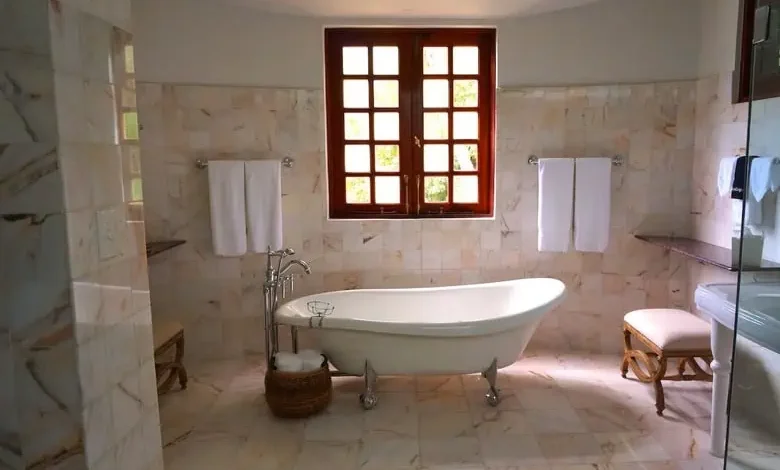10 Things To Consider When Remodeling Your Bathroom

Bathrooms commonly exhibit early signs of wear and tear owing to daily use and exposure to moisture and humidity. Taking into account the state of foundational elements such as walls, tiling, and plumbing, the typical lifespan of a bathroom ranges from seven to ten years. Whether you’re a new homeowner or are seeking to elevate the value and comfort of your residence in Fishers, Indiana, it is essential to consider the following factors when undertaking a bathroom remodel in the region:
-
Budget Basics: Planning Your Bathroom Makeover
Creating a budget for a bathroom remodeling project involves finding a balance between your dreams and financial limitations. While the prospect of designing a luxurious spa retreat in your master bedroom might be tempting, it is important to weigh the potential long-term impact on your overall financial well-being. A thoughtfully planned bathroom renovation should not compromise essential aspects of your lifestyle or hinder the progress of other home remodeling projects. Weigh the costs and benefits of DIY versus professional services based on your experience and budget. Given that bathroom remodeling can be unexpectedly expensive, generating realistic project estimates is often a primary concern for many. To overcome this budgeting challenge, conduct early research for a complete Fishers bathroom remodeling cost by exploring available market options, reviewing home magazines, and seeking guidance from professionals.

-
Hire a Contractor
Bathroom remodeling contractors handle tasks like demolition, structural repairs, and installations. If the project involves complex engineering elements, like wall removal or reconfiguration, consulting a licensed architect may be advisable. Professional designers can offer insights into efficient layouts and specialized fixtures. Many specialized bathroom remodel contractors provide these additional services. To find an excellent contractor, ensure they have a valid license, current insurance, extensive experience in bathroom remodeling, and a history of satisfied customers.
-
Design Layouts
Bathroom layouts are determined by key components such as sinks, showers, tubs, and toilets. A full bathroom includes all elements, while three-quarters and half bathrooms have fewer. Quarter bathrooms focus on only one key feature. The primary or master bathroom is the largest, with optional and luxury elements like saunas. Other types include Jack-and-Jill bathrooms, split layouts, and corner shower bathrooms for space optimization. Accessible residential bathrooms cater to wheelchair users, featuring larger spaces. Understand and explore these layouts to help you tailor your bathroom to your lifestyle and aesthetic preferences.
-
Select Quality Materials
When planning a bathroom remodel, opt for robust materials like waterproof laminate or ceramic tile, taking into account accessibility requirements. Invest in high-quality plumbing fixtures for enduring savings. Emphasize durability by choosing materials like ceramic tile or stone that balance function and design aesthetics. Opt for timeless selections with enduring appeal, including finishes and colors that endure humid conditions in Fishers, Indiana. Strike a balance between quality and budget constraints for cost-effective options. Get professional assistance to ensure access to quality materials and efficient labor. Consider factors like cost and long-term maintenance for a timeless bathroom remodel.
-
Focus on Functionality
A bathroom renovation is an opportunity to elevate the overall functionality of the space, making it more user-friendly and efficient. This can be accomplished through thoughtful enhancements such as increased storage options, a reconfigured layout for better flow, or the installation of modern fixtures and appliances. By prioritizing overall functionality, the revamped bathroom not only meets practical needs but also contributes to a more seamless and enjoyable daily experience for its users.
-
Local Codes and Regulations
The building code comprises regulations that say how buildings should be constructed in different places. It ensures that buildings are safe and comfortable. Each state or city has its own rules, which are decided by the government and enforced through permits and inspections. Building codes can change to keep up with new technology or to make things safer. If your bathroom project affects safety, hiring professionals can help you attain permits and pass inspections in the area.
-
Water and Energy Efficiency
Remodeling or building a bathroom is not just about aesthetics; it’s an opportunity to enhance water and energy efficiency. Toilets, which account for a significant portion of indoor water use, can be upgraded to models that use less water. Bathtubs can be enjoyed moderately, and showers with low-flow heads can be installed for both relaxation and water conservation. Fixtures like faucets can easily be made water-efficient with the addition of aerators, enhancing efficiency without compromising functionality. For improved energy efficiency, consider tankless water heaters that reduce standby heat loss or explore solar water heaters that can preheat water. Additionally, incorporating technologies like drain water heat recovery and recirculating pump systems contributes to efficient water use.
-
Smart Features
The future bathroom is defined by smart technology that appeals not just to early adopters but also to a broad audience, including single-family houses and apartment complexes. Innovations beneath the wall, in addition to apparent fixtures, enhance digital maintenance activities. Engaging all senses, the Smart Bathroom offers customizable experiences with features like innovative lighting, video walls, and immersive shower experiences. They offer hygiene benefits with touchless functionalities, and the trend is toward increased use of sensor-controlled features in private bathrooms.
-
Lighting
Smart LED lighting systems in bathrooms offer customizable brightness and atmosphere. Positioned over the mirror cabinet, users can create personalized lighting programs mimicking natural light throughout the day. Beyond functionality, these systems enhance the bathroom experience with emotional lighting scenarios. Motion sensor-equipped lights serve various purposes, including acting as a night light. LEDs also function as indicators for features like touchless flushing. Planning for a power supply is now integral, reflecting the evolving landscape of bathroom design.
-
Ventilation
Bathroom ventilation, typically achieved through ceiling fans, can face challenges in certain building designs. Adequate ventilation is crucial to preventing health issues like mold growth, especially in modern, airtight homes. Signs of problems include mold, foggy mirrors, and unpleasant odors. Choosing the right fan based on size and features and using proper duct materials is essential for effective ventilation.
Conclusion
A successful bathroom renovation integrates essential elements like layout, top-notch materials, functionality, adherence to local codes, water and energy efficiency, smart features, lighting, and ventilation. In the thriving Fishers, Indiana, real estate market, use the above-mentioned ideas to enhance your space. Collaborate with skilled professionals to manage costs, secure building permits, and maintain a well-balanced approach throughout the project.






